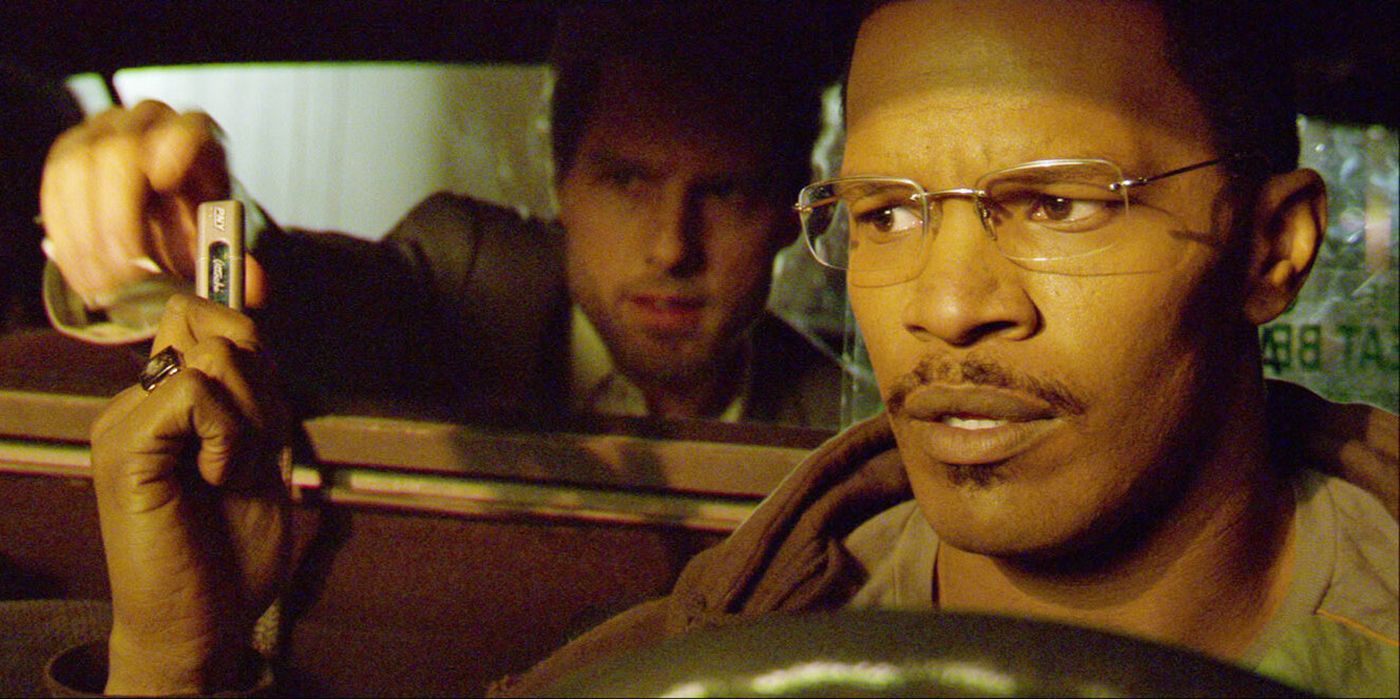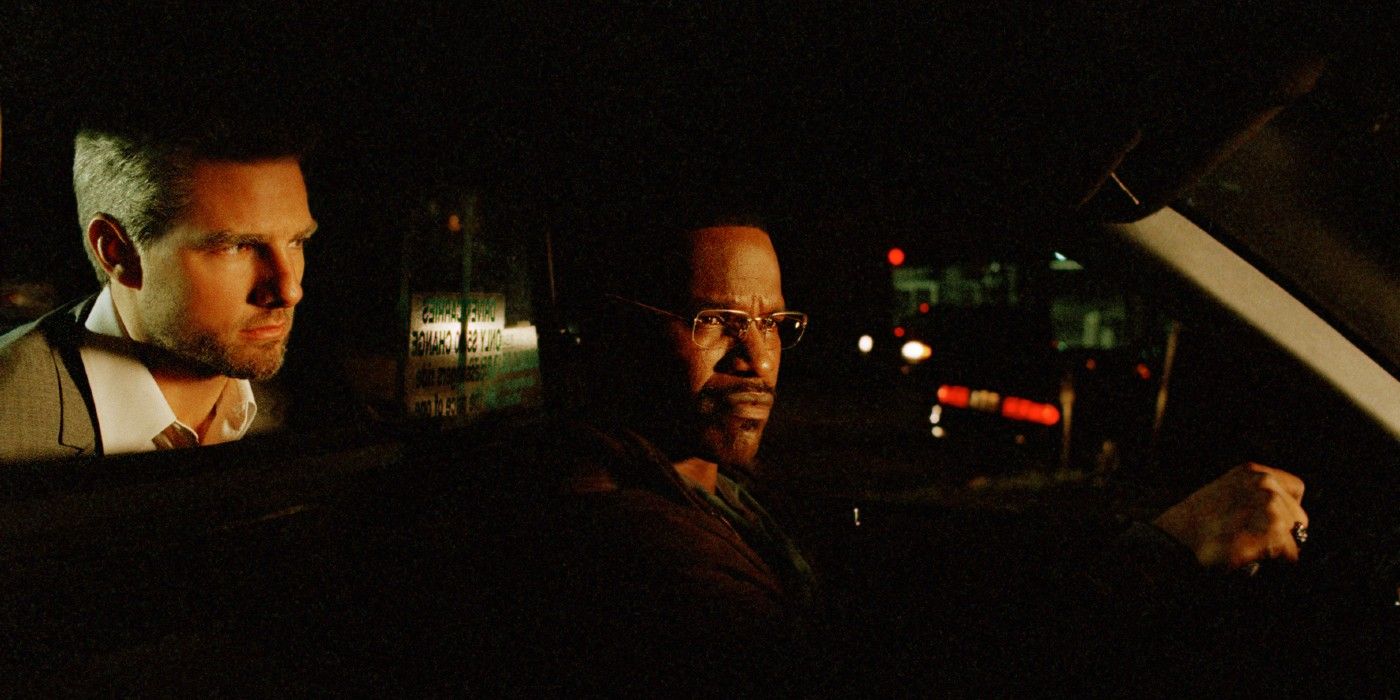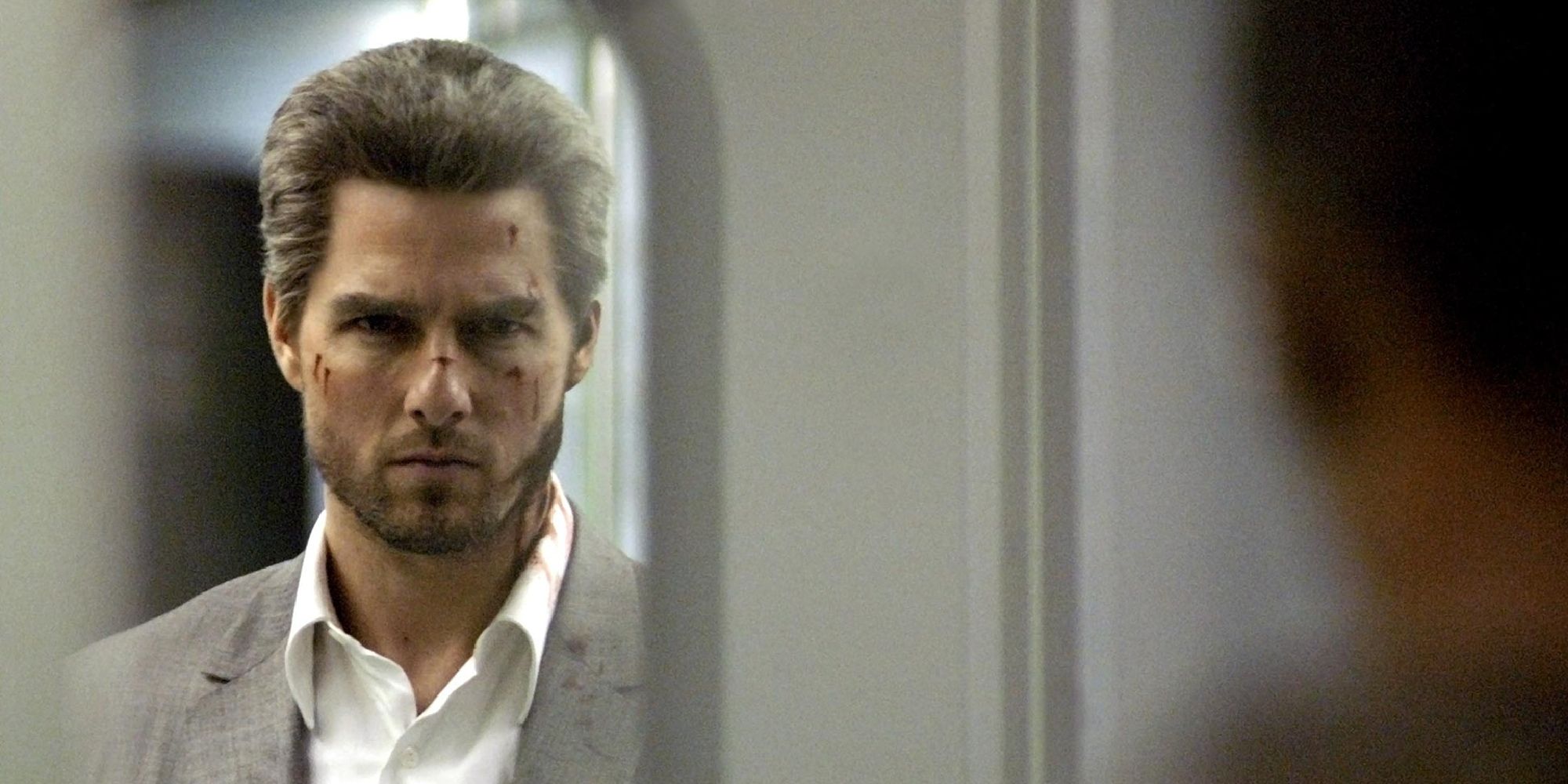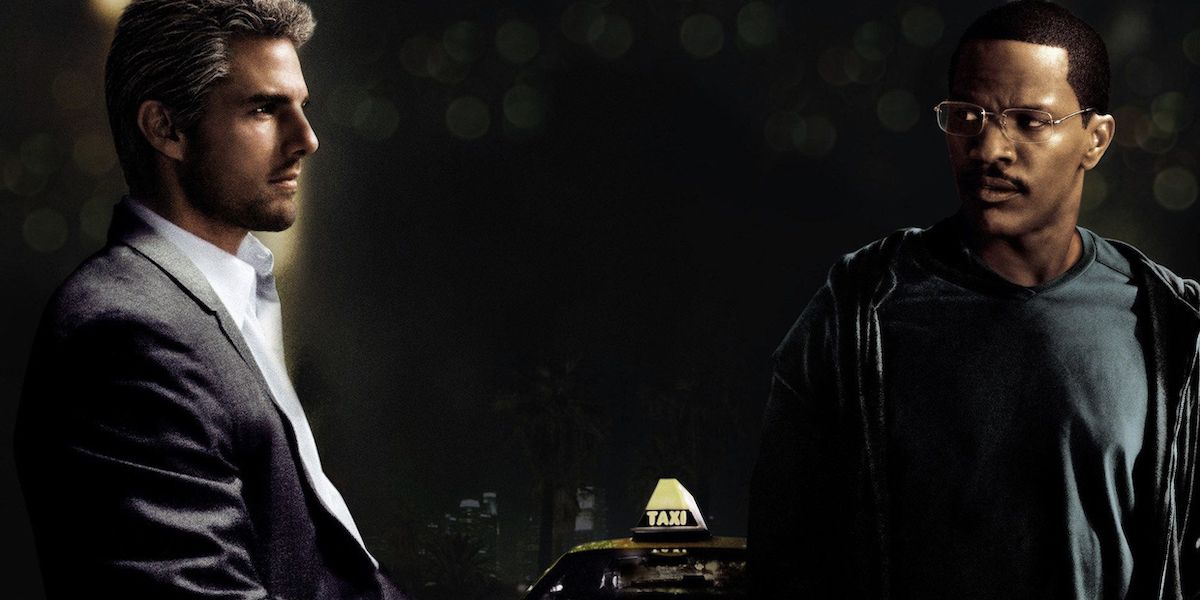The Big Picture
- Michael Mann's career can be split into two distinctive halves, showcasing a refined storytelling approach and a transition to a radical new style.
- Collateral marks the crossroads between Mann's old and new era, embracing digital cinematography while retaining a clear and unobtrusive narrative.
- The film's visual style, combining handheld video and traditional shooting techniques, gives it an intimate and modern feel, reflecting the changing world Mann captures.
Michael Mann’s career can be split into two very distinctive halves. His first era (defined by films like Heat and Manhunter) showcased a refined and almost novelistic approach to storytelling, with sweeping stories about complex characters who felt like they’d been ripped from the page of a classic tome, all told with a level of technical finesse that transformed even the most mundane scene into an awe-inspiring moment.
His second era is much different, switching his clean shot-on-film aesthetic for one that embraces the brave new world of digital photography, giving his films a radically different look that feels closer to a home movie than a big-budget feature. The settings of Miami Vice and Blackhat exist in an abstract plain of existence where colors and images convey stories along before dialogue does — digital lyricism by way of the silent era. Coupled with this are characters who appear closer to machines than people, vectors to convey emotions and moods that complement the expressionist worlds they exist in. It’s fascinating to see Mann’s approach to filmmaking shift to such a different (but equally rewarding) style, while still managing to retain the distinctive elements that have made him such an admired director. Watching his filmography in order allows someone to watch this change in real-time, and while the glimmers of his sophomore era could be glimpsed in Ali, it was his 2004 neo-noir thriller Collateral that marked the crossroads between the old and the new.
Set across a single night in Los Angeles, the film follows cab driver Max (Jamie Foxx) as he becomes an unwilling participant in a series of assassinations being performed by Vincent (Tom Cruise), a hitman who is also his current passenger. While the film does occasionally cut away to focus on the investigations of LAPD detective Ray (Mark Ruffalo) or the activities of federal prosecutor Annie (Jada Pinkett Smith), Mann keeps the focus firmly on Vincent and Max, following their odyssey of bloodshed across the eerie streets of L.A. It’s a classic genre picture — a film that does little viewers won’t have already seen, but told with an A-list cast and crew who elevate it well beyond its usual trappings, achieving the rare distinction of appealing to both critics and general audiences.
Originally intended as a low-budget feature for HBO before finding its way to DreamWorks (where Russell Crowe and Adam Sandler were set for the lead roles), Collateral marked the first time Mann embraced digital cinematography for an entire film (barring a few exceptions), resulting in a radically different look than what audiences were accustomed to. Despite this, Mann still kept one foot in the stylings of his previous films, with a clear story told in an unobtrusive way. This is not Miami Vice, starting halfway through its narrative and forcing the viewers to play catchup for half an hour while battling their way through endless names and technobabble, instead opting for a much slower opening that delicately lays out all of its pieces before the mayhem erupts.
Jamie Foxx's Max Is the Audience
Much of this time is spent on developing Max, perhaps the most sympathetic character to have ever appeared in a Michael Mann film. By the time the sun rises on the litany of bullet-riddled bodies Vincent has left in his wake, audiences will know enough about Max to write his biography. He’s the perfect audience surrogate, with his ignorance of all things illegal justifying the brief moments of exposition that add clarity to the plot. Mann films often feature protagonists who already have a long history with the criminal underworld, but films like Heat and Manhunter eased the viewer in without becoming overly wordy. His later films eschewed this approach, forcing the viewer to pick up the pieces themselves that cements their idea of the literal story taking second place to a broader selection of themes and emotions. In films like Miami Vice this works beautifully, plunging the viewer into a drug-fueled version of Florida that seems just as detached as its characters (while also working as a stylish subversion of what fans of the TV show would expect), but it’s also a decision that has proven polarizing. Collateral does not do this, however, sticking to a more straightforward path that never detracts from its purpose as an elegantly made blockbuster.
One of the most striking aspects of Collateral is its visual style. The handheld video look gives it an appearance unlike anything else, matched only by Mann’s later films that would push the style even further. While it does not abandon traditional shooting techniques entirely — every interior scene was shot on 35mm, as were the daytime exterior scenes — the bulk of the film utilizes this highly intimate, highly grainy look that transforms Los Angeles into a fully realized character in its own right. Rather than trying to mask his use of digital via post-production manipulation, Mann announces his newfound fascination loud and proud, taking advantage of its every benefit. Its ability to shoot in low-light combines with its homemade look to give Collateral an improvisational feel that helps it avoid the gloss of a typical Hollywood production. At times, it feels like you’re part of a convert documentary that is following right behind Vincent and Max the entire time, and when the film pauses the mayhem to focus on a small pack of coyotes crossing the empty streets of L. A. (a surprisingly serene and beautiful moment), the immediacy of the camerawork makes you feel like you’re right alongside them.
Mann's Second Era Is Clearly Rooted In the 21st Century
Similarly, it also gives the film a distinctly modern feel as though the passing of one century to the next had triggered a change in Mann’s perception of the world. With advances in technology fundamentally altering the nature of storytelling, it seems that Mann wanted to embrace rather than reject this change, coupling the 21st-century nature of Collateral’s story with the form that it is presented with. Nine years earlier Robert De Niro’s Neil McCauley was looking over physical blueprints under the weak glow of a car’s dome light, and now everything Tom Cruise needs is tucked away on a tablet PC that holds such importance that he almost kills Max after he destroys it. Not even 10 years have passed since Heat, but the world is already a very different place, and Mann is right there to document it.
Vincent is a strange character, simultaneously existing on both sides of Mann’s career that makes him even more enigmatic than he already is. His role as a criminal loner who follows a strict code of ethics has obvious throwbacks to the protagonists of Thief and Heat, but the cold and borderline inhuman way he perceives human life moves him closer to the muted characterization seen in Mann’s later films. During one scene Vincent visits Max’s mother in the hospital, and while he seems entirely pleasant during this encounter, the illusion is shattered a short time later when he announces (without a hint of emotion) that he will go back and kill her if Max doesn’t do as he’s told.
A Different Type of Protagonist
Characters like Miami Vice’s Sonny (Colin Farrell) or Blackhat’s Nicholas (Chris Hemsworth) are very unusual protagonists for a big-budget action film, lacking the charisma or relatability that such films typically opt for. At times, it can feel like they’re waging a fruitless war against the onslaught of a world that has sanded away all human emotions until we’re nothing more than a bunch of 1s and 0s on a computer screen, and it’s telling how passionately of a hold they keep on the few tangible things in their lives. As protagonists in an experimental take on a Hollywood action film they’re perfect, but for a general audience looking for just simple entertainment they can appear a bit off-putting. Vincent avoids this issue for two key reasons: first, he’s the villain, not the hero; and second, the coldness of his personality ties directly into his role as a hired killer, exacerbating the bitterness between him and Max/the viewer.
When Neil dies at the end of Heat, many viewers may find themselves feeling a touch of sadness despite witnessing him commit various murders and robberies throughout the film. Despite all his obvious faults there was a decent man buried underneath his suit, and there was never a suggestion that he did what he did for depraved, sadistic pleasure. But as for Vincent, who knows? We learn very little about him, and what we do get could easily be a lie. His death is unlikely to elicit much sympathy, and deliberately so. Interestingly, there’s a direct parallel between Neil’s introduction and Vincent’s conclusion. The former opens their film entering Los Angeles via a train, and the latter exits theirs on a train leaving Los Angeles. A moment of connective tissue between two of Mann’s greatest works, but it can also be interpreted as a symbolic passing of the torch from one era to the next — the archaic ways of old disappearing into the horizon while the glow of the new dawn heralds the arrival of the new.
It’s not uncommon for Mann’s older fans to be left cold by his most recent work, while many of his new admirers find it hard to go back to his early films due to their more conventional approach. It’s fascinating, then, to see Collateral attracting supporters from both sides of the aisle. It has the complex character work of the old and the digital experimentalism of the new, mixing it into an engaging story that appeals to every kind of moviegoer. For some, it was the last truly great film Mann ever made, and for others, it marked the start of his new renaissance. Either way, it’s arguably his most successful mix of arthouse sensibilities and good old-fashioned entertainment, and only the best directors can pull that off.




